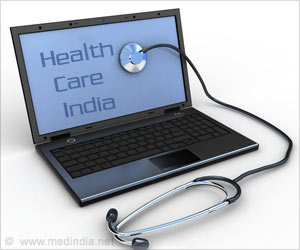A key provision of the Affordable Care Act (ACA) is the increase in Medicaid reimbursement for primary care providers. This has increased new patient appointment availability.

The study provides the first research-based evaluation of the association between the ACA's two-year Medicaid fee bump - for which federal funding expired on December 31, 2014 - and appointment availability for Medicaid patients seeking new patient primary care appointments at physician offices that participate in Medicaid.
"These findings provide early evidence that the so-called Medicaid primary care 'fee bump' had the intended impact of increasing appointment availability for Medicaid patients, despite the various complexities and hurdles the policy faced," said the study's lead author, Daniel Polsky, PhD, executive director of the Leonard Davis Institute of Health Economics at the University of Pennsylvania. "Our intention is for this evaluation to help inform state and federal legislative action around whether to maintain these reimbursement increases or to default back to lower levels in 2015 and beyond."
The study, conducted by a team of physician scientists and public policy researchers at the Leonard Davis Institute of Health Economics and the Perelman School of Medicine at the University of Pennsylvania, and health policy colleagues at the Urban Institute, utilized trained field staff, posing as Medicaid and privately insured patients seeking new-patient primary care appointments, calling offices in two waves. The first wave of calls occurred between November 2012 and March 2013 (before the reimbursement increase was fully in effect, due to various implementation delays), and the second wave occurred between May and July 2014 (when the reimbursement increase was in full swing). While appointment availability for privately insured callers (the control group) remained steady at 86 percent, overall appointment availability for Medicaid callers increased from 58.7 percent before the reimbursement increase, to 66.4 percent after the bump in Medicaid reimbursement. This increase in availability was largest in the states where primary care physicians received the largest increase in their Medicaid reimbursements.
Wait times for new patient appointments were also evaluated as a part of the study, but they remained stable with very little change over time, and showing no relationship to the size of a state's reimbursement increase (which varies widely based on a state's pre-fee bump Medicaid reimbursement level). In total, the first wave had 7,753 cases and the second wave had 4,225 cases for analysis.
"As of now, it remains to be seen what the future will hold for the Medicaid primary care fee bump," said the study's senior author and parent study principal investigator, Karin V. Rhodes, MD, MS, director of the department of Emergency Medicine's Center for Emergency Care Policy and Research. "However, these findings suggest that higher Medicaid payments are an effective strategy for ensuring Medicaid patient access to primary care providers, which addresses one of the main barriers for these patients getting primary care and gives policymakers some concrete data to consider moving forward."
Advertisement
"The Urban Institute estimated last month that Medicaid primary care fees would fall, on average, by 43 percent in 2015 as the two-year bump ends. Reductions of that magnitude would offset some of the gains in appointment availability identified in this new study," observed Stephen Zuckerman, co-director of the Urban Institute's Health Policy Center.
Advertisement
The Perelman School of Medicine has been ranked among the top five medical schools in the United States for the past 17 years, according to U.S. News & World Report's survey of research-oriented medical schools. The School is consistently among the nation's top recipients of funding from the National Institutes of Health, with $392 million awarded in the 2013 fiscal year.
The University of Pennsylvania Health System's patient care facilities include: The Hospital of the University of Pennsylvania - recognized as one of the nation's top "Honor Roll" hospitals by U.S. News & World Report; Penn Presbyterian Medical Center; Chester County Hospital; Penn Wissahickon Hospice; and Pennsylvania Hospital -- the nation's first hospital, founded in 1751. Additional affiliated inpatient care facilities and services throughout the Philadelphia region include Chestnut Hill Hospital and Good Shepherd Penn Partners, a partnership between Good Shepherd Rehabilitation Network and Penn Medicine.
Penn Medicine is committed to improving lives and health through a variety of community-based programs and activities. In fiscal year 2013, Penn Medicine provided $814 million to benefit our community.
Source-Newswise









